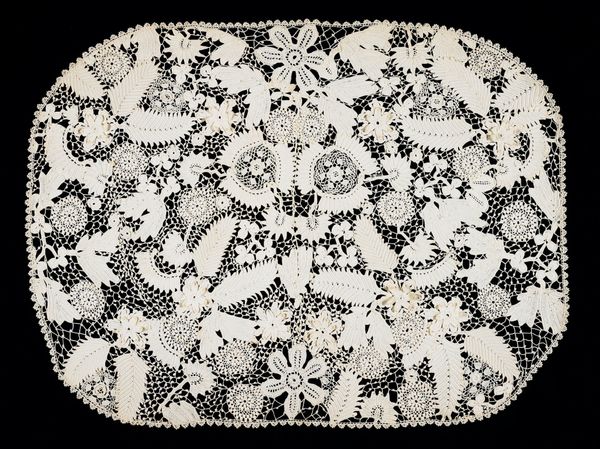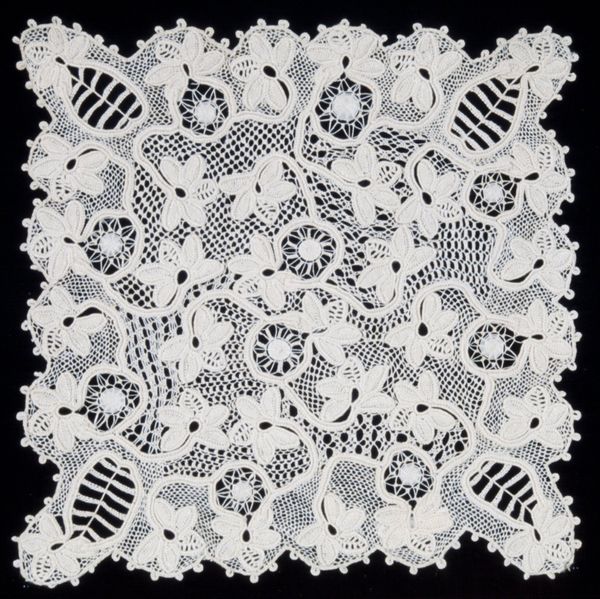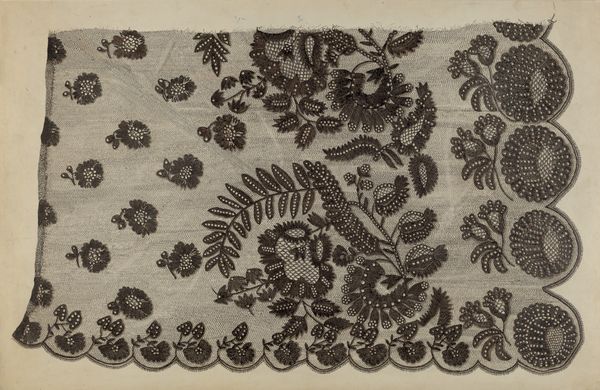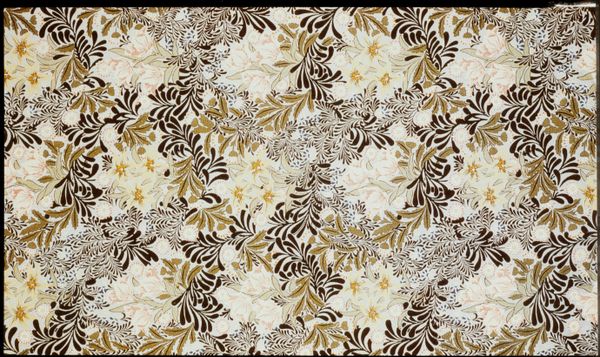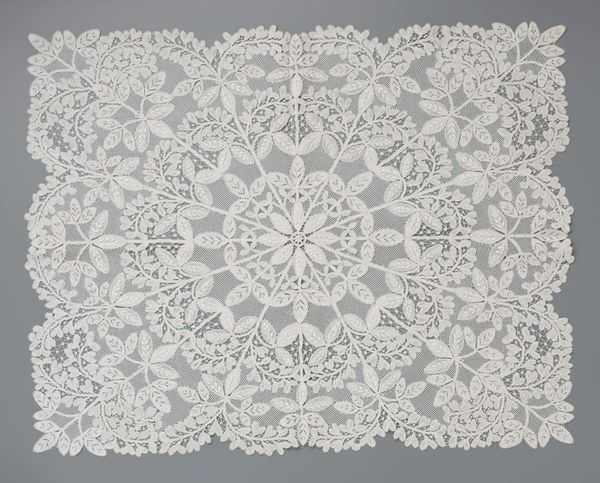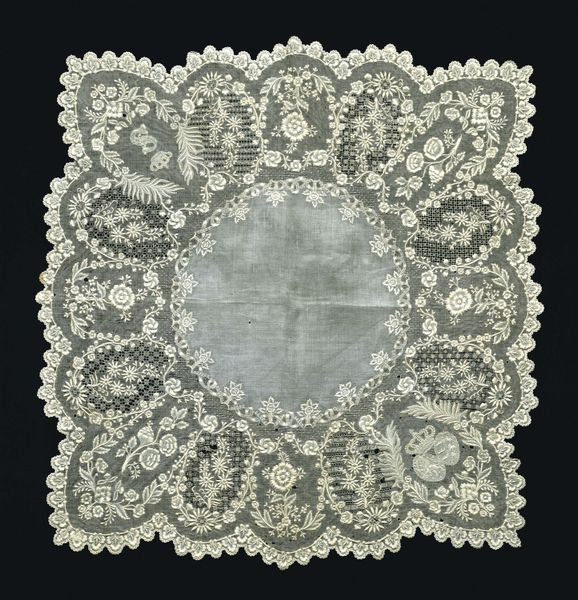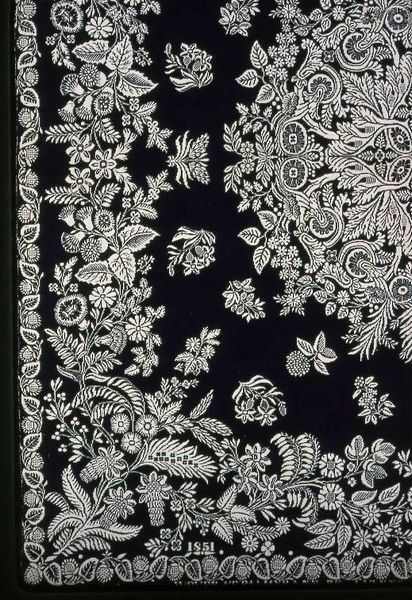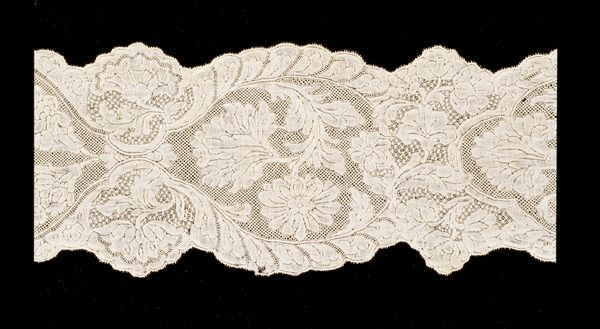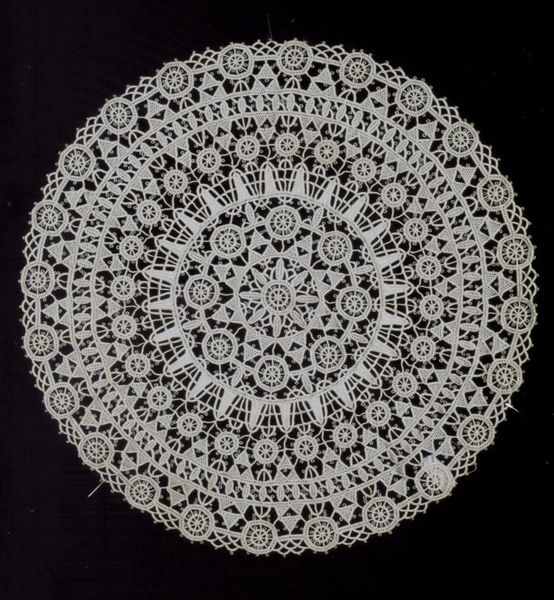
fibre-art, weaving, textile
#
fibre-art
#
arts-&-crafts-movement
#
weaving
#
textile
#
decorative-art
Dimensions: 28 x 40 in. (71.12 x 101.6 cm)
Copyright: Public Domain
Curator: This textile piece, titled "Irish Crochet," dates to around 1900. You can find it here at the Minneapolis Institute of Art. What are your first impressions? Editor: I’m struck by its incredible labor and delicacy. There’s something almost meditative about all that fine crochet work – it’s also intensely gendered work. I imagine countless hours, maybe generations, of women’s labor represented in this object. Curator: Indeed. Notice how the anonymous maker meticulously assembled this artwork. Individual floral and foliate motifs are crafted separately and then joined together with a fine net-like crochet background. Editor: That's quite interesting. Each motif could tell a story. Do you think it was meant as an assertion of female craft at a time when industrialisation was impacting the market? What can we decode from it in terms of social history? Curator: I think we can analyze its intricate structure beyond mere functionality. Consider how the juxtaposition of solid forms and voids creates visual interest. Semiotically speaking, the floral motifs signify idealized nature while the tight pattern represents control and the maker's masterful intervention. Editor: True, but the "idealized nature" part might actually mirror back to us the restricted spaces of women during that era. Needlework, while masterful, can also be seen as tethering them to domestic expectations, offering them limited avenues for public visibility. How can we address the limitations women faced during the early 20th century, and in what way did these impact textile art? Curator: The overall impression is nonetheless stunning and undeniably elaborate. Editor: But do we miss some other narrative when only examining visual appeal, dismissing other narratives embedded in the production history? I agree though—seeing its composition really adds layers. Now I am more drawn to studying Irish Crochet through both art history and theory.
Comments
No comments
Be the first to comment and join the conversation on the ultimate creative platform.

